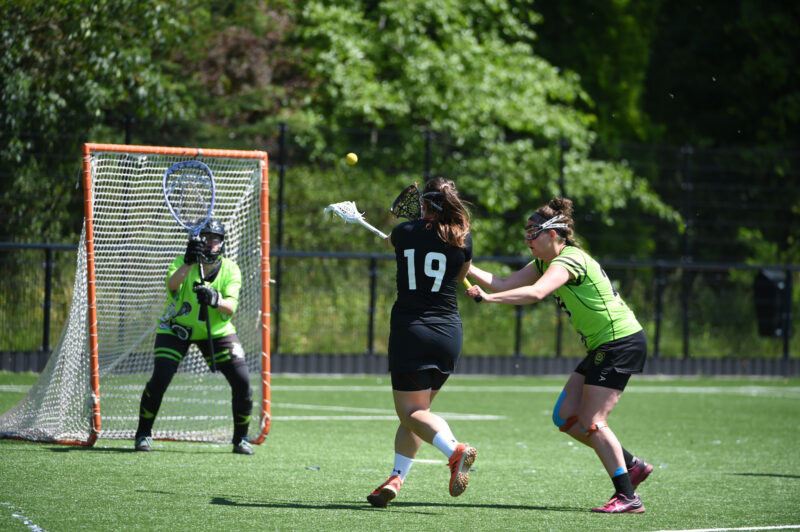The Rules
The rules of women’s lacrosse differ significantly from men’s lacrosse, most notably by equipment and the degree of allowable physical contact. Women’s lacrosse does not promote physical contact, primarily because the only protective equipment worn for this sport is a mouth guard, sometimes and face guard and thin gloves. Stick checking (with several rules applied), and not body checking as in men’s lacrosse, is permitted in the women’s game, but only in certain levels of play. Sometimes checking can lead to body checking; while this is still not permitted in a women’s game, some referees will allow limited body checking. Women’s lacrosse also does not allow players to have a pocket, or loose net, on the lacrosse stick.
The Game & Field
The number of players on the field is the same for women’s and men’s lacrosse: there are 3 defensive players, 3 midfielders, 3 offensive players and 1 goalie per team. However, the setup of the field is different from men’s lacrosse. Also, women players must abide by certain boundaries that do not exist in men’s play. The three specific boundaries are the 8-meter “fan” in front of the goal (11 meters internationally), the 12-meter (15 meters internationally) half circle that surrounds the 8-meter half circle, and the draw circle in the center of the field, which is used for the women’s version of “face-offs,” known as “draws”. The goal circle is also positioned slightly closer to the end line in women’s lacrosse, compared to men’s. In women’s lacrosse on either the offensive or defensive end, the players are not able to step inside the goal circle for any reason, except when the goalkeeper has stepped out of the circle and one defensive player has stepped in as her deputy; this becomes a “goal-circle violation”. However, for next season a new rule has been established that allows defenders to pass through the goal circle.
International
Internationally, the game is commonly played in British girls’ independent schools. While a minor sport in Australia, it is played to a very high standard at the elite level. Women’s lacrosse has seen significant growth in Europe since the beginning of the 21st century, particularly in Germany, the Czech Republic and the Netherlands. Japan entered its first team into the World Cup in 1993, and South Korea followed suit in 2009. In 2012, the first Israeli international team competed in the European Championships in Amsterdam.



